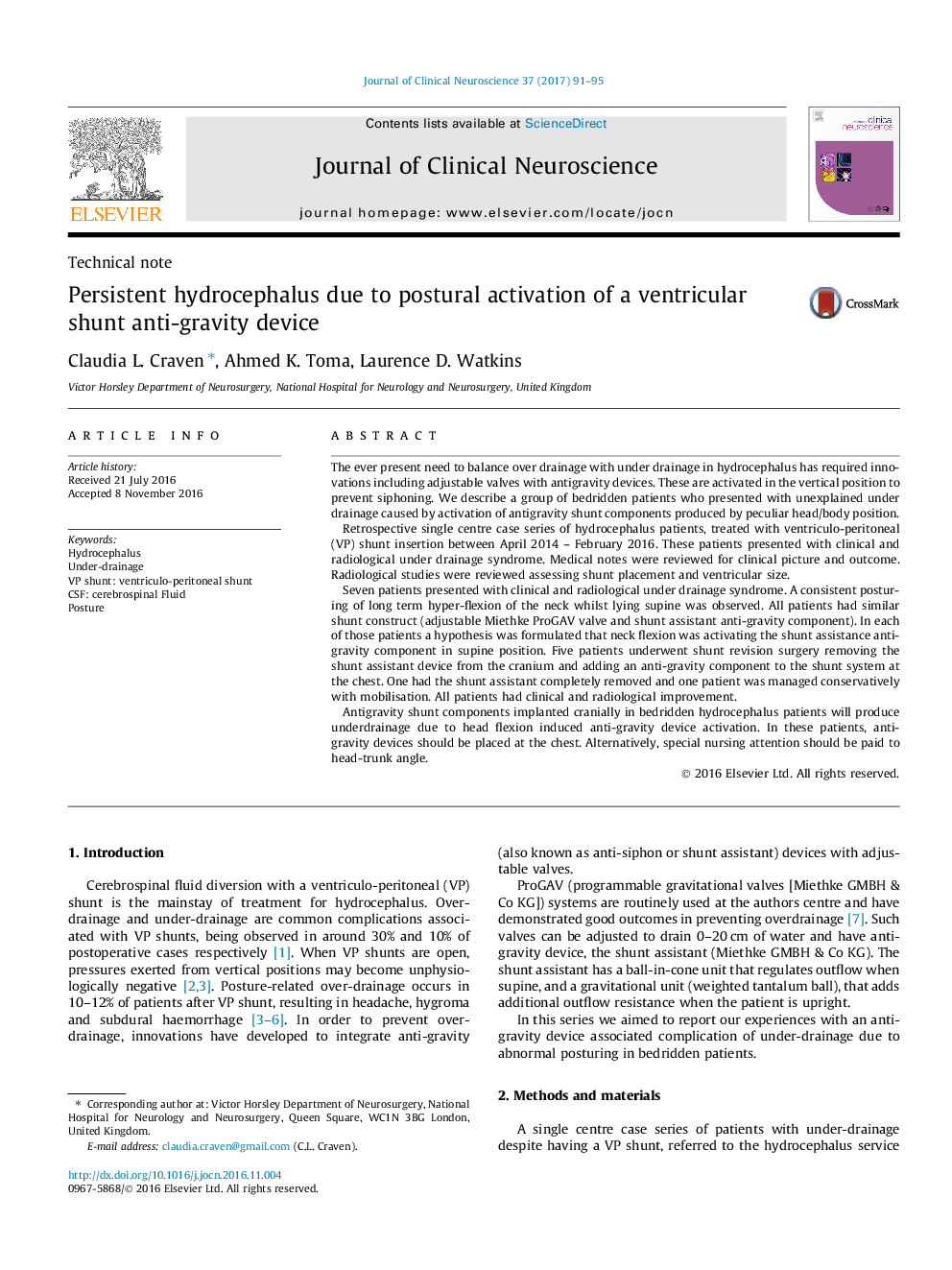| کد مقاله | کد نشریه | سال انتشار | مقاله انگلیسی | نسخه تمام متن |
|---|---|---|---|---|
| 5629994 | 1580279 | 2017 | 5 صفحه PDF | دانلود رایگان |
- Head-up posturing in recumbent patients can falsey activate a VP shunt's anti-gravity device.
- This should be recognised as a simple cause of inadequate CSF drainage.
- Patients who are known to be recumbent may benefit from pre-emptive placement of anti-gravity devices at chest level.
The ever present need to balance over drainage with under drainage in hydrocephalus has required innovations including adjustable valves with antigravity devices. These are activated in the vertical position to prevent siphoning. We describe a group of bedridden patients who presented with unexplained under drainage caused by activation of antigravity shunt components produced by peculiar head/body position.Retrospective single centre case series of hydrocephalus patients, treated with ventriculo-peritoneal (VP) shunt insertion between April 2014 - February 2016. These patients presented with clinical and radiological under drainage syndrome. Medical notes were reviewed for clinical picture and outcome. Radiological studies were reviewed assessing shunt placement and ventricular size.Seven patients presented with clinical and radiological under drainage syndrome. A consistent posturing of long term hyper-flexion of the neck whilst lying supine was observed. All patients had similar shunt construct (adjustable Miethke ProGAV valve and shunt assistant anti-gravity component). In each of those patients a hypothesis was formulated that neck flexion was activating the shunt assistance anti-gravity component in supine position. Five patients underwent shunt revision surgery removing the shunt assistant device from the cranium and adding an anti-gravity component to the shunt system at the chest. One had the shunt assistant completely removed and one patient was managed conservatively with mobilisation. All patients had clinical and radiological improvement.Antigravity shunt components implanted cranially in bedridden hydrocephalus patients will produce underdrainage due to head flexion induced anti-gravity device activation. In these patients, anti-gravity devices should be placed at the chest. Alternatively, special nursing attention should be paid to head-trunk angle.
Journal: Journal of Clinical Neuroscience - Volume 37, March 2017, Pages 91-95
